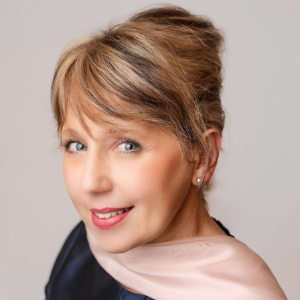Rosacea is a chronic inflammatory skin condition that primarily affects the face, causing redness, flushing, visible blood vessels, and in some cases, pustules or bumps resembling acne. While the exact cause of rosacea is unknown, factors such as genetics, abnormal immune response, and environmental triggers are believed to play a role. Common triggers include sunlight, stress, certain foods, alcohol, and temperature extremes. There are several subtypes of rosacea, including erythematotelangiectatic rosacea (characterized by persistent facial redness and visible blood vessels), papulopustular rosacea (involving acne-like bumps and pustules), phymatous rosacea (resulting in thickened skin and enlargement of facial features), and ocular rosacea (affecting the eyes, causing irritation, redness, and swelling). Diagnosis of rosacea is based on clinical presentation, medical history, and exclusion of other skin conditions. While there is no cure for rosacea, various treatments can help manage symptoms and prevent flare-ups. These may include topical and oral medications, laser therapy, and lifestyle modifications. In addition to rosacea, related disorders such as perioral dermatitis (inflammatory facial rash around the mouth), seborrheic dermatitis (chronic inflammation of oily areas of the skin), and demodicosis (infestation of hair follicles by the Demodex mite) can present with similar symptoms and may require different treatment approaches. Managing rosacea and related disorders involves a combination of medical interventions, avoidance of triggers, and skincare practices tailored to individual needs. Regular follow-up with a dermatologist is essential for monitoring symptoms and adjusting treatment as needed to optimize outcomes and improve quality of life.

Ravi M Rathod
KMCRI, India
Dechelette Corinne
La Peau Autrement, France
Irina Sergeeva
Novosibirsk State University, Russian Federation
George Sulamanidze
Plastic Surgeon at Clinic of Plastic and Aesthetic Surgery and Cosmetology TOTALCharm, Georgia
Nino Tsamalaidze
Ltd Karabadini+, Georgia
Lina Petrossian
California University of Science and Medicine, United States
Surajbala Khuraijam
Manipur Health Services, India
Shrutimita Pokhariyal
Symbio, India
Yasser Mohammed Hassanain Elsayed
Egyptian Ministry of Health, Egypt



Title : Paraneoplastic Autoimmune Multiorgan Syndrome or PAMS: Paraneoplastic pemphigus revisited
Sergei A Grando, University of California Irvine, United States
Title : Modern non-invasive methods for in vivo assessment of skin
Georgios N Stamatas, SGS, France
Title : Personalized and precision dermatology through the view of biodesign-inspired translational & data-driven applications: Revolutionary skin treatments for every concern in clinical dermatology integrating skin care experts and consumers
Sergey Suchkov, N.D. Zelinskii Institute for Organic Chemistry of the Russian Academy of Sciences, Russian Federation
Title : The next generation of threads: Lifting, volumization, and biostimulation in one powerful triple action
George Sulamanidze, Plastic Surgeon at Clinic of Plastic and Aesthetic Surgery and Cosmetology TOTALCharm, Georgia
Title : Lymphoproliferative diseases in the practice of a dermatologist
Irina Sergeeva, Novosibirsk State University, Russian Federation
Title : Art, skin, and dermatology: Interdisciplinary perspectives
Dechelette Corinne, La Peau Autrement, France
Title : Comparative efficacy of omalizumab and dupilumab in children with Chronic Spontaneous Urticaria (CSU): A retrospective cohort analysis
Molynna Nguyen, University of Toledo, United States
Title : "Mirror mirror on the skin” — A low-cost community strategy to reduce melanoma disparities in Washington, D.C.
Kayla Sampson, Georgetown University School of Medicine, United States
Title : Vitiligo: Not just an aesthetic disorder
Mateja Starbek Zorko, University Medical centre Ljubljana, Slovenia
Title : Personalized and Precision Medicine as a unique avenue to have the healthcare model renewed to secure the national biosafety: Advanced skincare solutions in individualized cosmetology, reconstructive plastic surgery and the modern beauty
Sergey Suchkov, N.D. Zelinskii Institute for Organic Chemistry of the Russian Academy of Sciences, Russian Federation